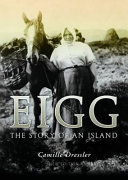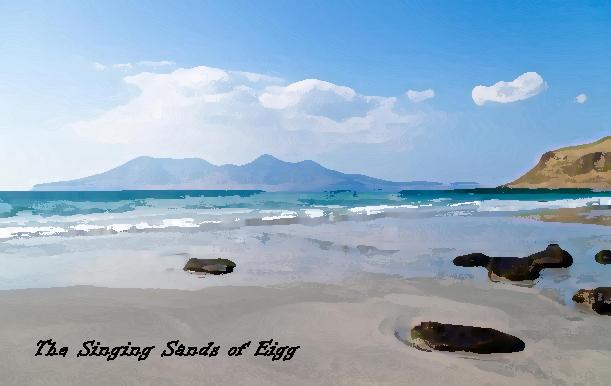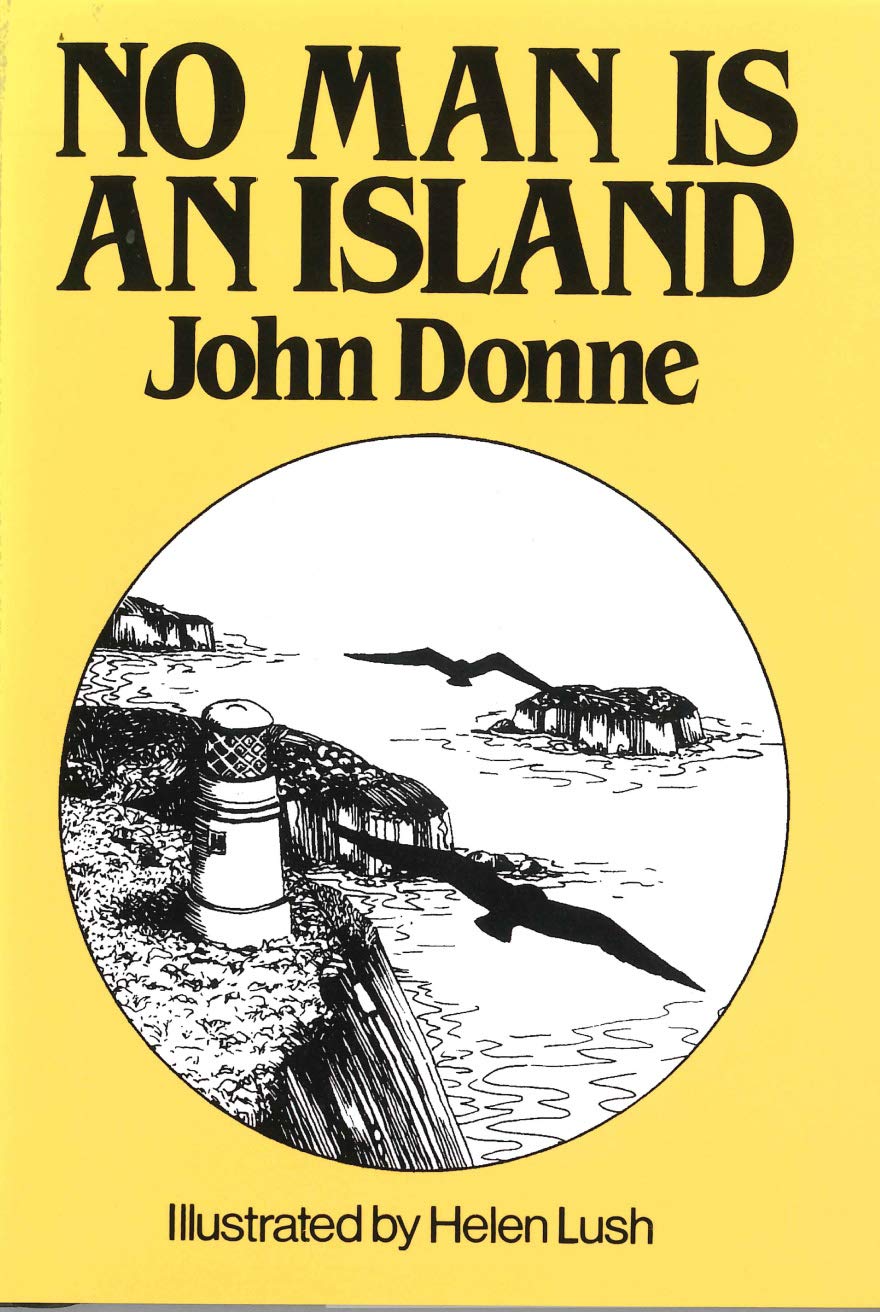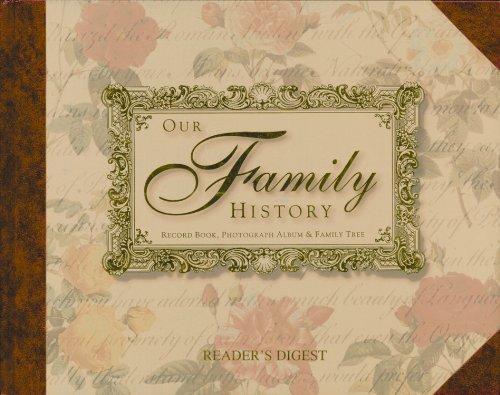The wedding telegrams sent from the Isle of Eigg were from my mother’s girlfriends as well as from relatives.
These were the girls she had been playing with ever since she was a young girl. My mother and her mother used to return to Eigg every summer for six weeks for the school holidays. In other words, these were the girls she had been running barefoot with along the Singing Sands beach.9
This was in the early 1930s, when my mother was barely a teenager. As a result, she and her friends had few thoughts about boys. In fact, the boys on the Isle of Eigg were said to be ‘nasty’ to the girls.
Eigg, the Story of an Island

One of my mother’s girlfriends on the island, Mary Bell MacDonald (see also the telegram below), is featured in Camille Dressler’s book about Eigg, “Eigg the Story of an Island” (2007):
“The boys did not want to have anything at all to do with us. They were horrible to us, always playing tricks on us or throwing stones. They’d wait for us at the top of Bealach Clithe ready to shower us with stones as we came home. We had to go through the hills and come back down at the other end of Cuagach.” (p. 110)
Funnily enough, Eigg the Story of an Island (2007), has a number of anecdotes about my mother’s friends and family on Eigg.
Friendships on the Island
Obviously, as the girls grew older, they stopped playing young girls’ games on the beaches and in the hills of Eigg and began to think about boys. Implicitly, this can perhaps explain the number of telegrams she received from her girlfriends of Eigg. They were all ‘interested in boys’; the fact that their girlfriend, my mother, was getting married at the age of 19, was most likely a topic of conversation amongst the young girls on Eigg.
Another important point to mention is that my mother’s marriage seemed to cut off all her relationships with her friends on Eigg. It seemed that the only person she kept in touch with on the island was her Auntie Flora.
In the following posts, you’ll find each greetings telegram that they sent them for their wedding.
The Nasty Boys of the Isle of Eigg10
Th’ wee boys oan th’ Isle o’ Eigg,
Nasty ‘n’ raucous, that’s whit thay are.
The wee boys o’ Eigg, they’re oot tae wage war
On us innocent girls of the singing sands beach.1112
They dinnae listen tae whit thair mithers teach –
That th’ girls o’ Eigg wull one day become thair wives;
That th’ girls o’ Eigg wull be a pairt o’ thair lives;
They dinnae listen, thay keep oan throwing stonesFrom th’ top o’ cliffs, hurting, hitting bones.
Shrieking, th’ girls teuk anither route, unplanned,
Going thro’ th’ hills ‘n’ come back th’ ither end.
Bit th’ girls wur aye happy,
Running barefoot togither o’er th’ singing sands.
But the wee boys ‘n’ girls o’ Eigg cuid ne’er be frends!
Standard English version:
Nasty and raucous, that’s what they are,
The boys of Eigg, they’re out to wage war
On us innocent girls of the Singing Sands beach.
They don’t listen to what their mothers teach;
That the girls of Eigg will one day be their wives;
That the girls of Eigg will one day be a part of their lives.
They don’t listen, they just keep on throwing stonesFrom the top of cliffs, hurting, hitting bones.
Shrieking, the girls took another route, unplanned,
Going through the hills, and coming back at the other end.
The boys and girls of Eigg could never be friends.
But the girls were still happy,
Running barefoot together across the singing sands,
But the wee boys and girls of Eigg could never be friends!
9 To the south of Cleadale lies the Bay of Laig, known for its quartz beach, called the ‘singing sands’ (Tràigh a’ Bhìgeil), because of the squeaking noise it makes if walked on when dry.
10 This poem is inspired by the story of one of my mother’s girlfriends on the island, Mary Bell MacDonald. It is reported in Camille Dressler’s book about Eigg, “Eigg the Story of an Island” (2007). As mentioned in the main body of the text, she recounts that “the boys did not want to have anything at all to do with us. They were horrible to us, always playing tricks on us or throwing stones” (p. 110).
11 To the south of Cleadale lies the Bay of Laig, known for its quartz beach, called the ‘singing sands’ (Tràigh a’ Bhìgeil), because of the squeaking noise it makes if walked on when dry.
12 When I visited Eigg around 2006-2008, I met my mother’s cousin Katie McKinnon who has lived her whole life on Eigg. She remarked that the summers in the 1920s and 1930s were marked by good weather. The children on the island would spend most of the time playing together. One of their favourite playgrounds was the ‘singing sands’ where they would run barefoot together. The vision across the sea was also magical and mystical – the Isle of Rhum! They would play amongst the rocks, pools and cave-like structures that are to be found there, or run in and out of oncoming waves with bare feet.
The ‘squeaky’ beach held a magical fascination for the children, so that even when they grew very old and were nearing the end of their lives, this was one of the happy memories of childhood – running barefoot along the silver singing sands. The ‘mystical’ Isle of Rhum once held a large population, but the laird evicted all his tenants, because he could make bigger profits from sheep farming (1826); see: https://electricscotland.com/history/clearances/32.htm



